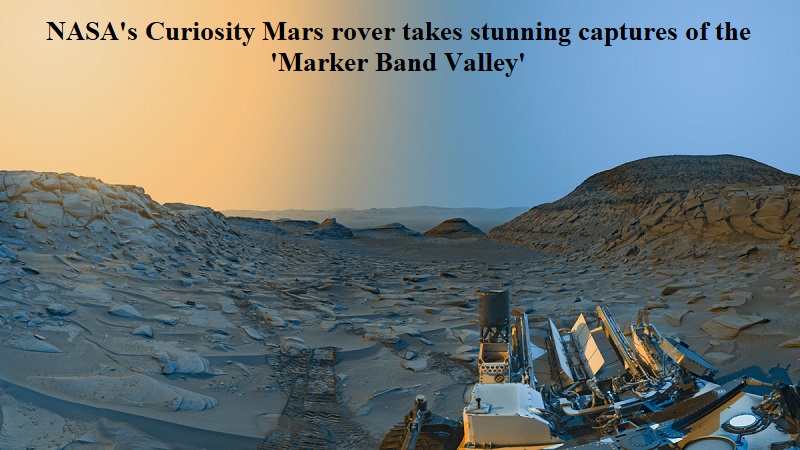
Following a significant software update that improved the driving capabilities of NASA’s Curiosity Mars rover and reduced wear on its wheels, the rover captured stunning images of the “Marker Band Valley” before moving on.
These images serve as postcards displaying the scenic landscapes of Mars at different times of the day, providing an artistic representation of the red planet.
According to NASA, the panoramas were taken by the rover’s black-and-white navigation cameras on April 8, 2023. The images were then enhanced with color, with blue added to the portions captured in the morning and yellow added to those taken in the afternoon.
The postcard showcases various landmarks on Mars, including the “Marker Band Valley,” where the rover made unexpected discoveries related to an ancient lake, as well as two hills named “Bolivar” and “Deepdale.”
Doug Ellison, a Curiosity engineer at NASA’s Jet Propulsion Laboratory, explained the significance of capturing images at different times of the day, likening it to how a scene in a national park appears different in the morning compared to the afternoon. The varying lighting conditions create distinct shadows, resulting in a dramatic visual effect.
NASA also noted that the photos were taken during winter on Mars, when the shadows appear deeper and darker due to the lower levels of dust in the Martian atmosphere.
In another development, a new mosaic image of Mars challenges the perception of the planet’s redness. Released to commemorate 20 years since the launch of the European Space Agency’s Mars Express spacecraft, the image was created using data from the spacecraft’s High-Resolution Stereo Camera (HRSC).
The detailed mosaic reveals the planet’s color and composition, indicating that Mars may not be as red as previously believed. The changing atmosphere of Mars has made it challenging to accurately capture its colors from space due to dust scattering and light reflection, causing variations between images.
The ESA explained that when assembling the mosaic, the mismatched pieces can result in a patchy appearance. However, this new image provides a clearer and more comprehensive view of Mars, showcasing its diverse hues beyond the traditional red.

Post Your Comments